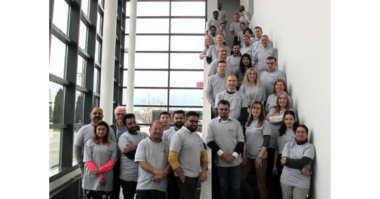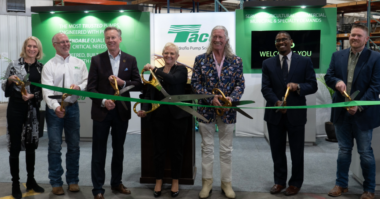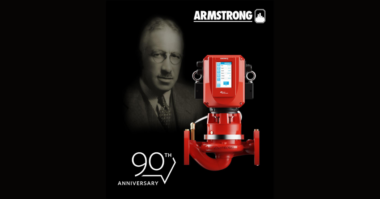Author: Henri Azibert
Large projects always appear daunting. How could so much activity possibly be coordinated? How does it all happen? There is a certain amount of excitement, but also apprehension, when involved in a large-scale project. Failure carries major consequences, and so much is at stake. At the time of commissioning, tension is high. How will it go?
The time of reckoning has come. The equipment upgrade must be installed, and a trial run is scheduled to verify operation. It most often begins with a very early start and a long voyage to some remote location. The mental check that all has been taken care of replays itself continuously during the ride before dawn. Do we have all we will need – tools, parts, the extra screws only available at the last minute before leaving the office? Did we miss any elements in the failure mode effects analysis? Were we given the right operating conditions? Will the cleaning products available on site be effective? Did we review all the design calculations sufficiently? Will our plan work out? What could go wrong? How will it be handled? What do we have for spares?
The relentless scenario playout is interrupted as we get access past a gate where the general public is left to wonder what lies beyond. The road meanders through cliffs and an arid landscape, finally arriving at a small building where a few work trucks are parked, partially blocking the end of the road.
It is cold stepping out of the car as the sun rises above the hill. Gathering the safety equipment from the trunk, trying to make sure all the specialized tools that will be needed are packed up, a final review of the documentation is hampered by shivering. At the door, a company employee lets us in. A brief introduction and then down what seems to be an interminable set of stairs.
The entire local crew is waiting in the control room. Amid dials, knobs, and metal cabinets, the safety review follows the introductions. A plan for the day is formulated and it is then time to suit up. It seems the overalls must have shrunk in the wash as it is challenging to get them over the shoulders. A few contortions, some fleeting evaluation of weight loss benefits, and then a tight but comfortable enough fit. The ubiquitous and uncomfortable plastic hard hat is on, and it is time to descend further to the equipment site. It is cold, but overalls, gloves, and hat make it bearable.
Two sets of ladders, one just in place for this event, are negotiated with care. We finally are close to the job site. It is time to assess the situation, gauge the size of the equipment. Flashlights are pulled out to inspect the final access through metal reinforcement ribs to the work area. It is barely three feet tall. There will be much crouching, contortions, and stretching required.
Back up the ladders to unpack the crate that has been placed in the staging area. All seems to be there, the assembly personnel back at the factory did a thorough job. There is even a cut-out in the packaging foam for the screws we brought with us. Clean rags are used to position all the parts in the order they will be assembled. A final inventory is made; it all checks out. Great start so far!
Back down the ladders for preparation of the work site. Grease and grime that accumulated over the years must be removed; surfaces need to be scrubbed. The tedious task of cleaning starts. A call to the local crew about getting some approved cleaners and more clean rags. Scrapper, wire brush, a block of wood, abrasive pads, various objects – all are used to expose the metal surfaces. The pile of dirty rags mounts. After a couple of hours of lying on the side, at times upside down, cushioning the ragged edges with layers of rags, the area is an affirmation of how well the machine was originally constructed. Thorough inspection will require better light. The local crew is called upon now to help with lighting. Waiting for the equipment, it is time for a stretch and figuring out how to move on to the next phase.
With lumens shining, the last remnants of dirt are eliminated, and next comes the arduous task of getting the parts down to their destination. A chain fall is used to lower the heaviest parts. Another chain fall is used to maneuver the parts around obstacles. The final positioning will require much strength and care, but we are getting close.
Assembly starts well. Just as it has been mentally rehearsed so many times. We are on schedule and optimism pervades the confined space. But then the larger heaviest part cannot be put into place. One of the structural webs is in the way. Trying to maneuver it different ways are just met by the same obstruction. Somehow it looked fine on the CAD model, but one dimension must have been slightly off. Sweat is pouring, the helmet is sliding off and over, the glasses are fogging up. Fatigue is setting in. It is time to reset.
It does not appear that the installation can proceed. A short meeting with the responsible in charge. Options are evaluated. After much deliberation it is decided to modify the offending obstacle. It should not significantly affect the strength of the structure. A saws-all is located, and a try reveals that the only blade available is so dull that it is getting more worn out rather than cutting the necessary metal. One more meeting and someone will be sent to get new blades. It will take a couple of hours.
Time to wait. Making sure all will be set once progress can be made. Climbing outside to admire the landscape and waiting. And waiting.
With brand new supplies, the long descent to the site is now second hand. We are set and ready. The outline of the cut is followed. The sound of the blade attacking the metal reverberates through the space and it feels like the entire facility is vibrating. Finally, it is time to find if it will work. A last push, accompanied by grunts and groans, get the parts in position. Time to get back to the original plan.
Assembly is complete. A check with the local crew to plan trial run next morning. How is it that we feel we have been working together for years? It has been 13 hours since we first arrived. I suddenly realize how hungry I am. Back at the motel that has not seen upgrades for decades, nagging questions refuse to go away. What will happen when the valves are open, and the machine is turned on tomorrow? Will there be leaks, grinding noises, an abrupt stop? What have we missed? The mental rehearsal of all potential failures is starting to play out, over and over and over, only to be interrupted by periods of restless slumber.





Comments